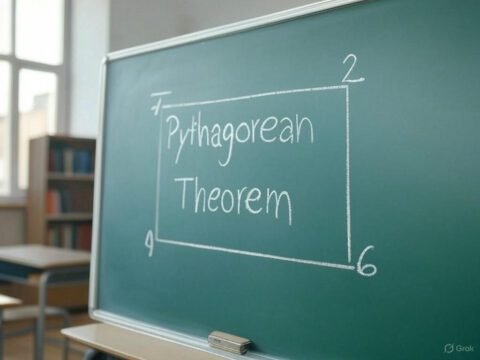📘 Parent Functions Equations: The Backbone of Algebra and Graphing
Let’s be real: if math had a family tree, parent functions would be the OG ancestors.
Whether you’re diving into Algebra 2, Precalculus, or SAT prep, knowing your parent functions and their equations is like unlocking cheat codes to graphing, transformations, and problem-solving.
In this guide, we’ll walk you through:
What a parent function is (with zero jargon)
The 10+ core parent functions you must know
How to identify them on sight
How transformations change their graphs
And we’ll make it fun, too. Let’s go!
🎯 What Is a Parent Function?
A parent function is the most basic form of a set of functions in a family. Think of it like the “default version”—the purest, simplest form of the equation before any transformations like shifting, stretching, or reflecting.
It’s the foundation from which all its “offspring” are created through operations like:
Translation (shifting left/right/up/down)
Dilation (stretching or compressing)
Reflection (flipping across axes)
🔑 Why Are Parent Functions Important?
🔍 Recognition: Spotting the base function helps you quickly understand graphs and equations.
📉 Graphing Made Easy: Once you know the parent, you can sketch transformed versions in seconds.
🧠 Test Readiness: ACT, SAT, IB, and AP exams love testing transformations and function identification.
Parent Functions: The Building Blocks of Algebra
Understanding the fundamental functions and their transformations
Parent functions are the simplest forms of function families, serving as the foundation from which more complex functions are created through transformations. By mastering these core functions, you'll gain powerful tools for analyzing and solving diverse mathematical problems.
Linear Function
- Domain: All real numbers (ℝ)
- Range: All real numbers (ℝ)
- x-intercept: (0, 0)
- y-intercept: (0, 0)
- Slope: 1
- Increasing/Decreasing: Increasing on (−∞, ∞)
- Symmetry: Origin symmetry
Examples of Linear Functions
This is a transformation of the parent function where the slope has been changed from 1 to 2 (making it steeper) and the y-intercept has been shifted down 3 units to (0, -3). The x-intercept is now at (1.5, 0).
This transformation has changed the slope from 1 to -0.5 (making it decreasing and less steep) and shifted the y-intercept up 4 units to (0, 4). The x-intercept is at (8, 0).
Quadratic Function
- Domain: All real numbers (ℝ)
- Range: [0, ∞)
- x-intercept: (0, 0)
- y-intercept: (0, 0)
- Vertex: (0, 0) (minimum point)
- Axis of Symmetry: x = 0
- Increasing/Decreasing: Decreasing on (−∞, 0), Increasing on (0, ∞)
Examples of Quadratic Functions
This transformation flips the parabola to open downward, stretches it vertically by a factor of 2, and shifts it up 4 units. The vertex is now at (0, 4) and is a maximum point rather than a minimum. The x-intercepts are at (±√2, 0).
This transformation shifts the parabola right 3 units and down 2 units. The vertex is now at (3, -2). In standard form, this equation would be f(x) = x² - 6x + 7.
Cubic Function
- Domain: All real numbers (ℝ)
- Range: All real numbers (ℝ)
- x-intercept: (0, 0)
- y-intercept: (0, 0)
- Inflection point: (0, 0)
- Increasing/Decreasing: Increasing on (−∞, ∞)
- Symmetry: Origin symmetry
Examples of Cubic Functions
This transformation reflects the cubic function across the x-axis, compresses it vertically by a factor of 0.5, and shifts it up 2 units. The y-intercept is at (0, 2) and the x-intercept is at approximately (1.59, 0).
This transformation shifts the cubic function left 1 unit and down 3 units. The inflection point is now at (-1, -3) and the y-intercept is at (0, -2).
Absolute Value Function
- Domain: All real numbers (ℝ)
- Range: [0, ∞)
- x-intercept: (0, 0)
- y-intercept: (0, 0)
- Vertex/Corner point: (0, 0)
- Increasing/Decreasing: Decreasing on (−∞, 0), Increasing on (0, ∞)
- Symmetry: y-axis symmetry
- Piecewise definition: f(x) = x if x ≥ 0, and f(x) = -x if x < 0
Examples of Absolute Value Functions
This transformation stretches the V-shape vertically by a factor of 2 and shifts it down 3 units. The vertex is at (0, -3) and the x-intercepts are at (±1.5, 0).
This transformation flips the V-shape upside down (creating an inverted ∧-shape), compresses it vertically by a factor of 0.5, shifts it right 2 units, and shifts it up 1 unit. The vertex is at (2, 1) and is a maximum point.
Square Root Function
- Domain: [0, ∞)
- Range: [0, ∞)
- x-intercept: (0, 0)
- y-intercept: (0, 0)
- Increasing/Decreasing: Increasing on (0, ∞)
- End behavior: As x approaches ∞, f(x) approaches ∞, but at a decreasing rate
Examples of Square Root Functions
This transformation stretches the function vertically by a factor of 2 and shifts it down 1 unit. The x-intercept is now at (0.25, 0) and the y-intercept is at (0, -1).
This transformation shifts the function left 2 units and up 3 units. The domain is now [-2, ∞) and the range is [3, ∞). There is no x-intercept.
Reciprocal Function
- Domain: All real numbers except 0 (ℝ - {0})
- Range: All real numbers except 0 (ℝ - {0})
- x-intercept: None
- y-intercept: None
- Asymptotes: x = 0 (vertical), y = 0 (horizontal)
- Increasing/Decreasing: Decreasing on (-∞, 0) and (0, ∞)
- Symmetry: Origin symmetry
Examples of Reciprocal Functions
This transformation stretches the function vertically by a factor of 2. The asymptotes remain at x = 0 and y = 0, but the function approaches the horizontal asymptote more slowly.
This transformation reflects the function across the x-axis, shifts it left 2 units, and shifts it down 3 units. The vertical asymptote is now at x = -2 and the horizontal asymptote is at y = -3.
Exponential Function
- Domain: All real numbers (ℝ)
- Range: (0, ∞)
- x-intercept: None
- y-intercept: (0, 1)
- Asymptote: y = 0 (horizontal)
- Increasing/Decreasing: Increasing on (−∞, ∞)
- Special value: e ≈ 2.71828 (Euler's number)
Examples of Exponential Functions
This variation changes the base from e (≈ 2.718) to 2. Like the parent function, it passes through (0, 1) but grows more slowly. The horizontal asymptote remains at y = 0.
This transformation stretches the function vertically by a factor of 3, shifts it left 1 unit, and shifts it down 2 units. The horizontal asymptote is now at y = -2 and the x-intercept is approximately at (-1.51, 0).
Logarithmic Function
- Domain: (0, ∞)
- Range: All real numbers (ℝ)
- x-intercept: (1, 0)
- y-intercept: None
- Asymptote: x = 0 (vertical)
- Increasing/Decreasing: Increasing on (0, ∞)
- Special value: ln(e) = 1
- Inverse: The natural logarithm ln(x) is the inverse of the exponential function e^x
Examples of Logarithmic Functions
This variation changes the base from e to 10 (common logarithm). The x-intercept remains at (1, 0) and it grows more slowly than ln(x) for x > e. A special value is log₁₀(10) = 1.
This transformation reflects the function across the x-axis, stretches it vertically by a factor of 2, shifts it right 3 units, and shifts it up 1 unit. The domain is (3, ∞) and the vertical asymptote is x = 3.
Sine Function
- Domain: All real numbers (ℝ)
- Range: [-1, 1]
- x-intercepts: (nπ, 0) where n is an integer
- y-intercept: (0, 0)
- Period: 2π (approximately 6.28)
- Amplitude: 1
- Symmetry: Odd function (origin symmetry)
Examples of Sine Functions
This transformation increases the amplitude from 1 to 3, expanding the range to [-3, 3]. The period remains 2π and the x-intercepts remain at x = nπ, where n is an integer.
This transformation increases the amplitude to 2, shortens the period to 2π/3, shifts the function right by π/3 units, and shifts it down 1 unit. The range is [-3, 1].
Cosine Function
- Domain: All real numbers (ℝ)
- Range: [-1, 1]
- x-intercepts: (π/2 + nπ, 0) where n is an integer
- y-intercept: (0, 1)
- Period: 2π (approximately 6.28)
- Amplitude: 1
- Symmetry: Even function (y-axis symmetry)
- Relation to sine: \cos(x) = \sin(x + π/2)
Examples of Cosine Functions
This transformation reflects the cosine function across the x-axis. The y-intercept becomes (0, -1) and the range remains [-1, 1]. This is equivalent to f(x) = \cos(x + π).
This transformation reduces the amplitude to 0.5, shortens the period to π, shifts the function right by π/2 units, and shifts it up 2 units. The range is [1.5, 2.5].
Comparing Parent Functions
Understanding these basic functions helps you analyze more complex relationships in advanced mathematics. The table below summarizes the key properties of each parent function we've explored:
| Function | Equation | Domain | Range | Key Features |
|---|---|---|---|---|
| Linear | f(x) = x | ℝ | ℝ | Slope = 1, passes through origin |
| Quadratic | f(x) = x² | ℝ | [0, ∞) | Parabola opening upward, vertex at origin |
| Cubic | f(x) = x³ | ℝ | ℝ | S-shaped curve, inflection point at origin |
| Absolute Value | f(x) = |x| | ℝ | [0, ∞) | V-shaped graph, vertex at origin |
| Square Root | f(x) = √x | [0, ∞) | [0, ∞) | Half of a parabola starting at origin |
| Reciprocal | f(x) = 1/x | ℝ - {0} | ℝ - {0} | Asymptotes at x = 0 and y = 0 |
| Exponential | f(x) = eˣ | ℝ | (0, ∞) | Rapid growth, y-intercept at (0, 1) |
| Logarithmic | f(x) = ln(x) | (0, ∞) | ℝ | Slow growth, x-intercept at (1, 0) |
| Sine | f(x) = sin(x) | ℝ | [-1, 1] | Periodic, period 2π, amplitude 1 |
| Cosine | f(x) = cos(x) | ℝ | [-1, 1] | Periodic, period 2π, amplitude 1 |
Any function can be transformed using these basic operations:
- Vertical Stretch/Compression: f(x) = af(x) - multiplies all y-values by a
- Horizontal Stretch/Compression: f(x) = f(bx) - divides all x-values by b
- Vertical Shift: f(x) = f(x) + k - shifts the graph up by k units
- Horizontal Shift: f(x) = f(x - h) - shifts the graph right by h units
- Reflection across x-axis: f(x) = -f(x) - negates all y-values
- Reflection across y-axis: f(x) = f(-x) - negates all x-values
Remember: Horizontal transformations work in the "opposite" direction of what the equation suggests!
🔄 Understanding Transformations
Let’s take the quadratic parent:
👉 f(x) = x^2
Apply a transformation:
👉 f(x) = (x – 3)^2 + 2
That means:
Shift right 3 units
Shift up 2 units
💡 Tip: Always start from the parent function. Then apply shifts, reflections, or stretches.
👀 Visual Recognition Trick
Memorizing graphs helps a lot. Here’s how to think of them:
Linear = straight diagonal line
Quadratic = classic U-shape (parabola)
Absolute value = sharp “V”
Exponential = swoops up fast
Rational = two curved branches in diagonally opposite quadrants
📚 Study Tips to Master Parent Functions
Create flashcards: One side = graph. Other side = equation + name.
Use Desmos: Type in parent and transformed versions to see the effect.
Group study: Quiz each other on what function you’re looking at.
🧠 Practice Makes Powerful
Knowing the equations is just the beginning. The real mastery comes from recognizing them quickly and understanding how they move.
Once you’ve got parent functions down, you’ll fly through graph-based questions and boost your math confidence tenfold.

